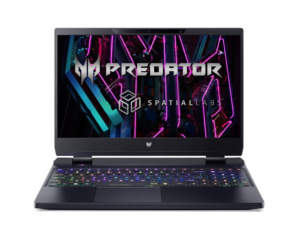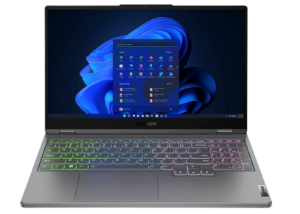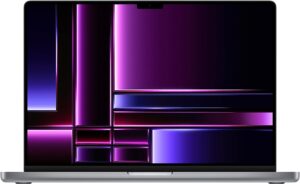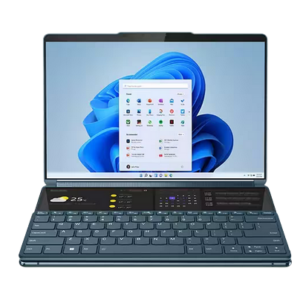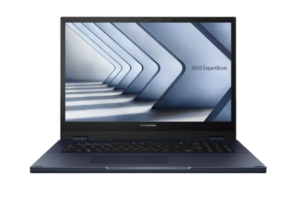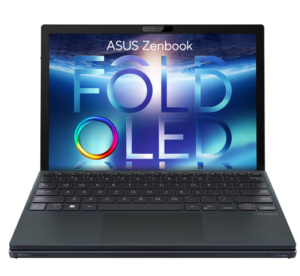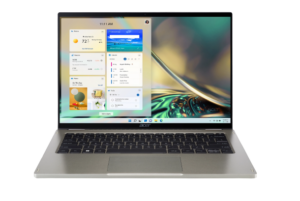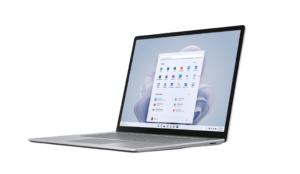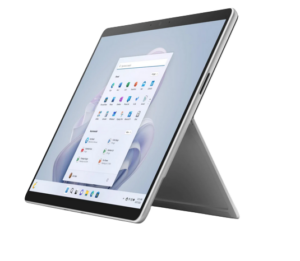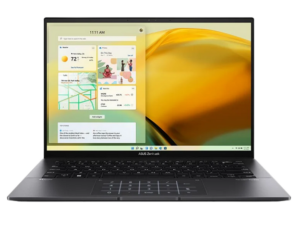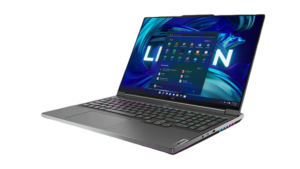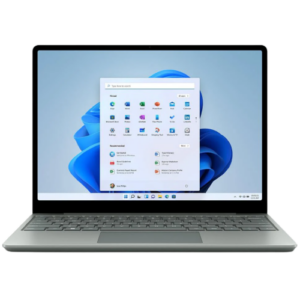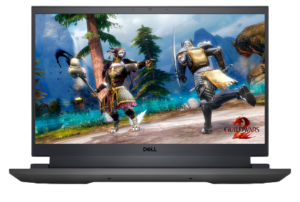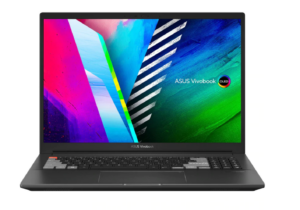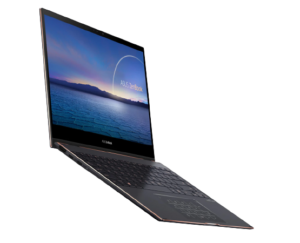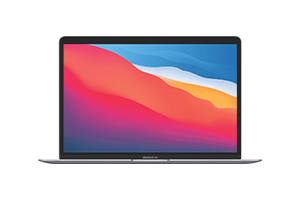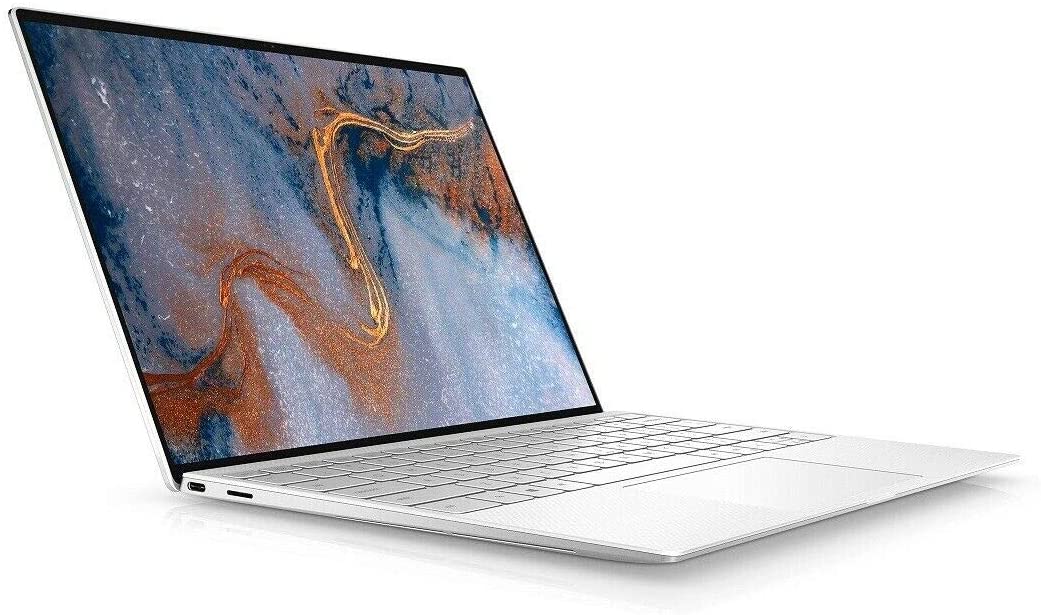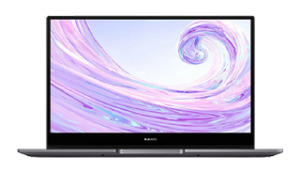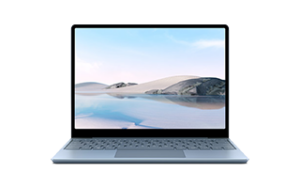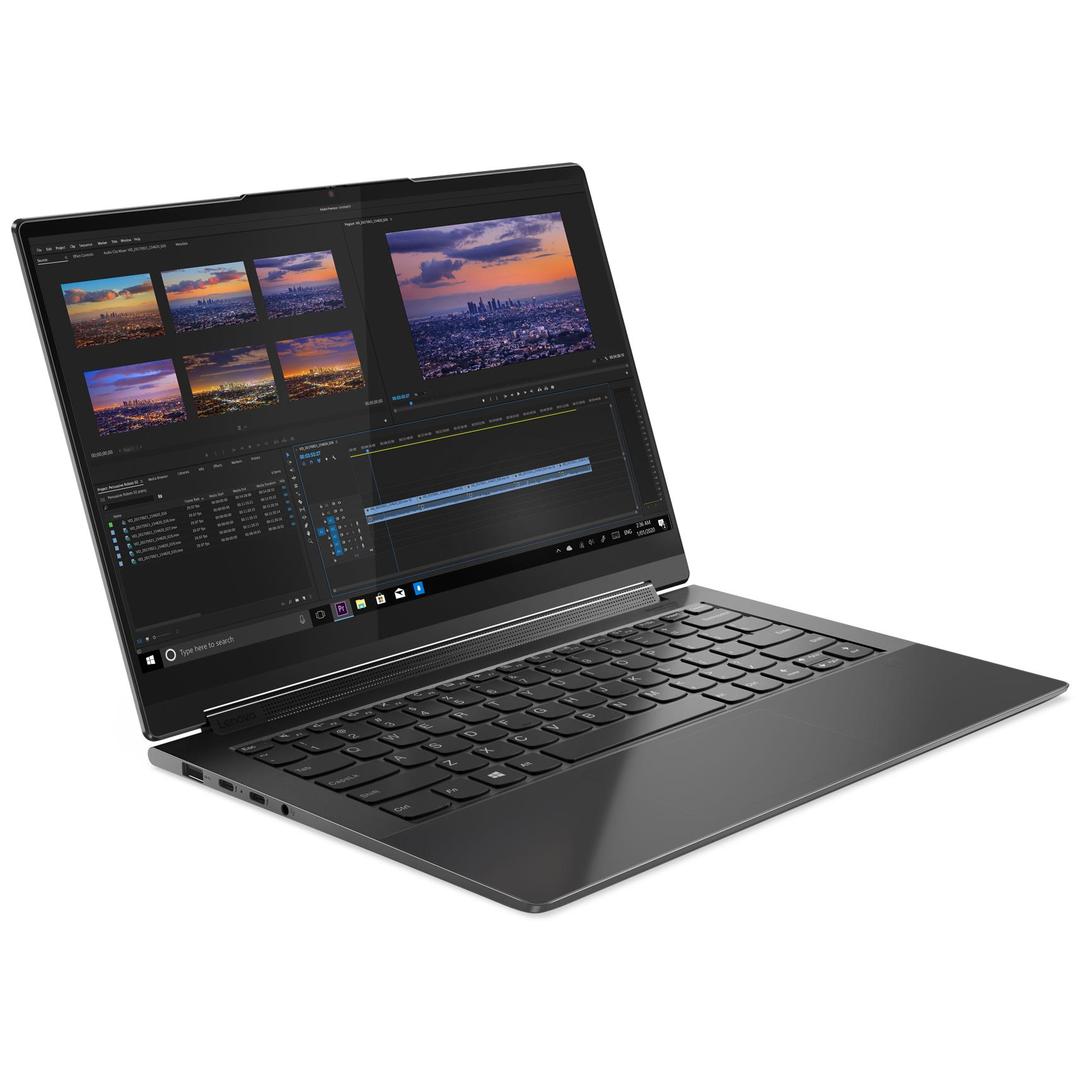Windows on ARM arrives. AI? Not so much.
Microsoft Surface Laptop Copilot Plus review: Quick study
Laptops don't usually change much from year to year, but Microsoft is looking to break out of that pattern with the new Surface Laptop Copilot Plus. That name is a mouthful, but it speaks to the more meaningful (and arguably necessary) revisions that the folks behind Windows are looking to make in pursuit of positioning its competitor to Apple's MacBook.
Essentially, the seventh-generation Surface Laptop arrives at the crest of two big advancements. The first of these is a shift from x86 architecture to an ARM-based one. The second is a zealous embrace of generative AI and all the potential productivity applications that it unlocks. That one-two punch makes for a Surface Laptop that feels more significant than the last few iterations, even if it doesn't quite live up to its ambitions.
The Surface Laptop feels like a historic step forward for Windows laptops, but it's not quite the final destination.
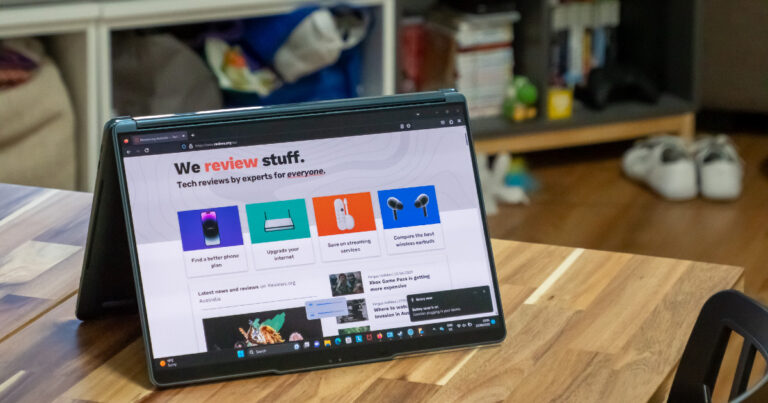
How much does Microsoft Surface Laptop Copilot Plus cost in Australia?
In Australia, pricing for the Microsoft Surface Laptop Copilot Plus starts at $1899. That's the cost of the baseline model, but there are a few variants available, including one with a larger 15-inch screen.
If you're looking to get thrifty with it and lock in the best bargain Australia's retailers offer when it comes to the Surface Laptop Copilot Plus, check out the table below.
Before you make a decision, be sure to read our recommendation for the specs.
Microsoft Surface Copilot Plus - Design and features

At a glance, there's not a huge difference between the design of this year's Surface Laptop Copilot Plus and the Surface Laptops that have come before it. Like those devices, the pitch here as simple as draping the aesthetics of Microsft's Surface Pro tablet across a more traditional form-factor.
That's a simple sell, but it doesn't hurt that it comes with a decent number of options. The new Surface Pro comes in one 13-inch size and the same storage configurations but is available with either an LCD or OLED display.
While those complications allow ample wiggle room to get the version of this device that best suits you fancy, the fundamentals are relatively consistent. Having a smaller screen means more portability. A larger one gives you more pixels to play with. In eithe case, you'll still get a designs that's more defined by what it doesn't do than what it does.
There's no fancy soundbar hinge or foldable screen here. There's no high-end color grading. There's no quad-speaker sound system and there's no bundled stylus. The Surface Laptop Copilot Plus isn't looking to cater to those who want to push the boundaries of what a laptop can look like as much as it is those who want one that doesn't get too distracted by gimmicks.
Even if overall layout isn't all that different from most other laptops, there's something to the little bit of extra attention that Microsoft Surface team has put into the fundamentals here. The larger trackpad feels responsive and reliable. The palm rests remain comfortable over longer sessions and the keyboard remains similarly satisfying in its punchy physicality.
That ethos is very much embodied by the arrangements of ports here. The rightmost edge of the Surface Laptop Copilot Plus features a Surface Connect port. The left is where you'll find a pair of USB-C ports, a single USB-A port and a headphone jack.

Storage: The baseline model comes with 512GB. This cannot be upgraded.
Memory: The baseline model comes with 16GB. This cannot be upgraded.
On the inside, Microsoft are quick to talk a big game about the neural processing unit and AI app capabilities of the Surface Laptop Copilot Plus.
The headline feature here was Recall, which promised to let you rewind and search through your laptop's chronology at a whim. However, this feature has been delayed and relegated to the Windows Insider Program for further testing amid security concerns.
In its absence, the Surface Laptops other AI-powered productivity hacks feel like a bit of a sideshow. For example, you can now use a feature in Paint called Cocreator to have an AI turn your rough sketches into more professionally rendered art assets and have Live Captions added to any bit of media you encounter. The latter feels like a really clever win for accessibility, even if its accuracy remains iffy.
Meanwhile, Cocreator feels like a magic trick that's impressive in isolation but lacks real-world utility outside of placeholder assets. The ability to produce this kind of media content without a professional background or relevant skills is inherently intriguing but it works to highlight how much more work goes into the skillset that it promises to replace.
In addition, it's not clear what the value of having the 40 TOPS of AI performance offered by the Surface Laptop Copilot Plus is. According to a Microsoft spokesperson, "With higher TOPS, consumers can expect quicker processing times for complex AI tasks, leading to a smoother and more seamless user experience."
In other words, there's not much to it beyond having apps that load just that little bit faster. That's always nice, of course. However, it's also not exactly transformative and far short of the next era in personal computing.
If you buy a brand-new version of this product, the box will include the following:
- The Surface Laptop Copilot Plus
- Power brick and AC adapter
Microsoft Surface Copilot Plus - Performance and battery life

Under the hood, the Microsoft Surface Copilot Plus runs either the baseline Snapdragon X Plus or the performance-oriented Snapdragon X Elite processor, up to 32GB of RAM and up to 1TB of SSD storage. The model we reviewed was as high-spec as this particular laptop gets.
Naturally, the one missing piece here is a dedicated GPU. If that's something that you need for your workflow or gaming pursuits, you'll have to look elsewhere or find some way to survive on what the Snapdragon X series can offer.
In terms of how we'd rate it, the the Snapdragon X Plus model is firmly in Everyday territory while the Snadragon X Elite version of Surface Laptop Copilot Plus barely squeaks over the line into the Enthusiast category.
While both models are capable enough for everyday tasks, the absence of advanced cooling tech or a dedicated GPU means that it won't suit situations where those inclusions are more necessary than nice-to-haves. There was a point in my career where I relied on a Snapdragon-powered PC as my daily driver and the reality was that it was mostly fine so long as I kept the limits of the hardware in mind. Fewer of those constraints remain intact nowadays but in some ways its not that dissimilar to the tradeoffs you think about when it comes to choosing MacOS or ChromeOS over Windows.
Essential processors should be able to handle the basics: email, social media and some light web browsing. Gaming or more advanced tasks like image and video editing are likely off the table.
Everyday processors should be able to confidently meet basic performance requirements for most people. Email, social media and web browsing shouldn’t be a hassle, and while they aren’t able to handle graphically-demanding AAA releases, they should be able to run some indie or casual games. This is typically where Chromebooks top out.
Enthusiast processors should be able to easily exceed the minimum requirements of most users and be powerful enough to handle some AAA gaming, though not at the highest fidelity. That usually excludes most ARM processors.
Extreme processors should be able to do anything you can think of. Games should run at high frame rates on the highest possible settings, and multitasking shouldn’t be limited in any significant way.
In the lead-up to the launch of the Surface Laptop Copilot Plus, Microsoft has been talking up how this iteration of Windows on ARM would finally be able to close the gap between it and Apple. Our benchmarking results saw this simple narrative complicated, but not necessarily disproven.
When it came to Geekbench, the Surface Laptop Copilot Plus returned higher scores than most other Windows laptops we've tested with the exception of gaming hardware like the Legion Pro 5i. It's Cinebench scores were similarly competitive but it scored more middle-of-the-pack when it came to Novabench.
Of course, this isn't Microsoft's first attempt to make the transition from x86 to ARM. Its previous attempts have seen app compatibility emerge as a serious sticking point.
To help ease these teething issues this time around, Microsoft have invested in a feature called Prism. Akin to the Rosetta emulation found in M-series MacBooks, this promises to bridge the gap between the old world of x86 apps and the new world of ARM-optimised ones. In practice, I found it mostly worked fine or at least well enough that I didn't have to think about it. There are tens and thousands of Windows apps out there, so I'm sure that there are a couple that don't play nice with Prism. However, if your workflow mostly exists within the confines of a web browser or Adobe's creative suite, the Surface Laptop Copilot Plus is going to be more than up to the task.
That said, you're probably paying a little more than you could get away with here. Microsoft's argument for ARM as a viable way forward here has some merit, but it falls short when it comes to value for money. $1899 is a lot of money to gamble, even if it is a safer bet than it first appears to be.
And even though the Surface Laptop Copilot Plus is very much pitched as an everyday or work device, it's only natural to wonder how games run on it. The answer is promising but predictable.
More demanding titles and benchmarks struggled to run or even outright crashed. Less-demanding titles like Moonbreaker or Battletech, older games like Warhammer 40,000: Space Marine and indie releases like Nightmare Kart ran better but not without the occasional drop in frames-per-second. Strategy games like Spice Wars and Solium Infernum were an uphill battle.
That said, I could imagine persevering through the low-frame rate if I was young, patient and no ability to access more powerful hardware. Plus, there's also nothing stopping you from using this machine as a vessel for cloud streaming via Xbox Games Pass as well.
According to a Microsoft spokesperson, "Copilot Plus PCs are built on ARM architecture and are designed for productivity users buying premium devices. While Windows emulation and Automatic super resolution bring new enhancements to gaming on Arm, players who want a high-performance gaming experience may choose an alternate device. Compatibility will be limited for games that require anti-cheat from independent software vendors that have not yet ported to Arm, as well as games that require porting to Arm to meet playability requirements. "
As for battery life, I think the Surface Laptop Copilot Plus fared well enough that I'd call it terrific. It took just 11 hours and 1 minutes of video streaming to run the battery inside the unit from 100% to zero. That's definitely longer than what comparable Intel and AMD-based Windows laptops deliver, but well short of what we got out of Apple's more recent MacBooks.
There are few things more annoying than buying a brand new laptop and discovering it has a bunch of annoying bloatware installed out of the box. Here's what the software situation for the Surface Laptop Copilot Plus looks like once you've set it up for the first time.
- Copilot
- Surface app
Is the Microsoft Surface Copilot Plus worth buying?

Microsoft's new Surface Laptop Copilot Plus ends up feeling like an uneven double act. It's by a wide margin the strongest case that Microsoft has made to date that the future of Windows could lie on ARM, but it's far from flawless and the AI features feel like a bit of a sideshow.
There's so much to like about the lean and performance oriented approach to laptops on display here, but when the transition from one set of app architectures to another inevitably leaves some things to fall through the cracks it's hard not to wish the Surface Laptop Copilot Plus was just that little bit thriftier.
Microsoft has made a great case that ARM on Windows is viable. Now it just has to convince us its valuable.
How we review laptops
Whether you're looking at a mainstream computer brand like Dell or a dedicated gaming brand like MSI, there's an immense number of decisions you'll need to make when purchasing a laptop. If you're not sure where to start, here are a few important features to consider when shopping for your next laptop:
- Screen size and type: Unlike upgradeable components like your GPU, RAM and storage, you're stuck with the display you buy when you purchase a laptop. Is it a comfortable size? Does it offer a wide-viewing angle?
- Resolution: Similarly, you can't change your display's resolution after the fact. 1080p (Full HD) is the bare minimum these days and most laptops worth their price tag aim for 1440p at least (QHD or QuadHD) but you can also opt for 4K if you're willing to spend a little extra.
- Refresh rate: A screen's refresh rate is the measurement of how frequently it changes. If you play fast-paced multiplayer games like Call of Duty, you know that the difference a few milliseconds that a high refresh rate gets you can count for a lot. The higher the refresh rate, the better. Most conventional laptops offer 60Hz to 90Hz but fancier gaming laptops can offer 144Hz, 165Hz or even 240Hz screens.
- Ports and connections: Like your screen, ports will impact your everyday experience with a laptop, particularly if you use it for work. While you can work around this with USB hubs and adapters, a laptop with fewer ports than you need can quickly become a headache.
- Future-proofing: There are no hard and fast rules here but as a general suggestion, you'll want to sure you're laptop has the legs to survive a few years of technology improvements in any way you can. You can overshoot on your desired specs, spending more on a machine that's more powerful than you currently need, or opt for a model or brand that has support for upgrades down the track. Check which features of the machine are upgradeable. The Dell XPS 15, for example, supports additional RAM, while Apple MacBooks do not.
Check out our dedicated laptop buying guide for more suggestions on shopping for the best laptop for your needs or this more in-depth guide on how we review laptops.
Surface Laptop Copilot Plus FAQ
16GB is a good place to start when it comes to RAM, but it's not necessarily going to be the end of the road if your needs are more demanding. It's enough to get by, but it might not be enough for the future or for more performance-oriented users.
If your next laptop doesn't support upgrading your RAM later down the line, it's usually smart to overshoot and aim for 32GB of RAM instead.
Not all RAM is born equal. Size isn't everything. Speed also matters.
If you're looking to find out just how fast the RAM in your laptop is, the quickest way to do so is to identify the type of memory and then Google the standard expected speeds that it should offer. For example, LPDDR5 offers speeds of up to 6400Mbps while DDR4 memory can only rev up to 3200Mbps.
If you want to go one step further and determine whether the RAM in your laptop is delivering the speeds it should be capable of offering, then it might be worth putting the hardware to the test with a benchmarking tool like Novabench.
It's easy to spend too much or too little on your next laptop, but our take is that the best value laptops tend to sit between $1600 and $2200 in terms of price. PCs that occupy this price-point might not be able to outperform more expensive alternatives, but the bump up in quality over cheaper ones is well worth the cost involved.
Simply put, laptops of this price segment tend to sidestep all the compromises of going cheaper while getting most of the performance you'll get from spending more.
These days, there are three types of Intel Core processors found in laptops. The first is the humble Intel Core i5 processor, then there's the middle-of-the-range Intel Core i7 and the poweruser-oriented Intel Core i9.
If you're going purely by the numbers, the Intel Core i9 is going to provide the best results. However, it's also the most demanding in terms of thermal management. A laptop running an Intel Core i9 processor will be faster than one with an Intel Core i7 or Core i5, but it'll also run hotter.
If you're an everyday or more casual user, an Intel Core i5 is probably going to be fast enough for you. If you're more discerning or planning to play a lot of games, then the up-sell to an Intel Core i7 probably makes sense.
While there's no single component responsible when it comes to laptop speed, the part that usually takes the credit is the processor. If you want your next laptop to be a fast one, you'll want to make sure it has a good processor in it.
As with desktop PCs, the processor is only part of the picture however. If your laptop lacks enough RAM or relies on a slower hard drive for file storage, that'll act as a bottleneck on the performance of the machine as a whole.
Related Articles












